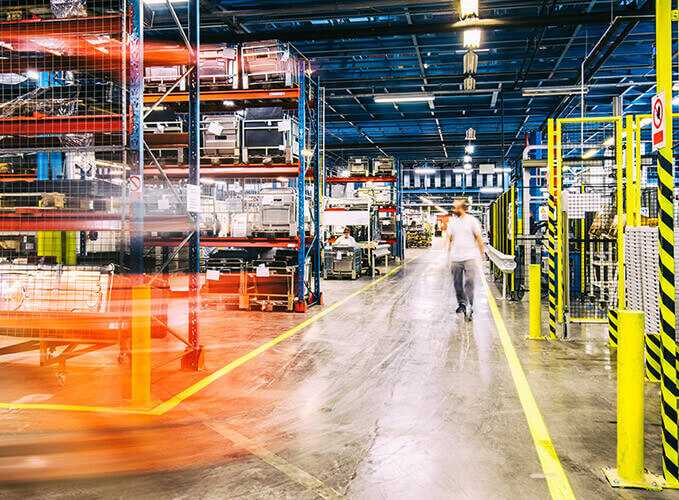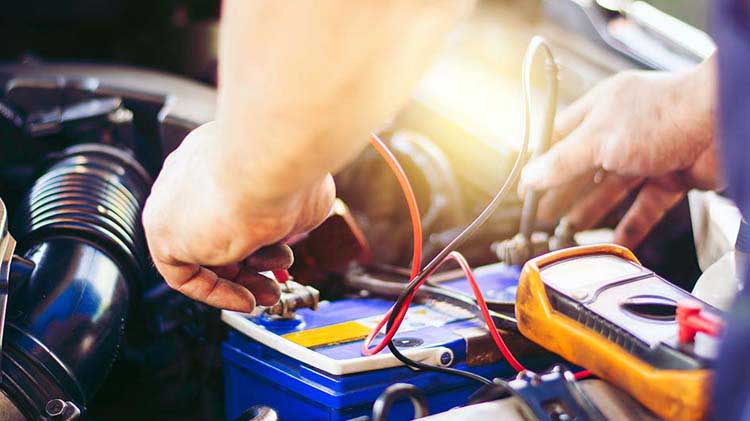Lithium-ion Batteries: Powering modern life
Lithium-ion batteries are an indispensable energy storage medium in our modern lives, playing a central role in everything from smartphones to electric cars. These small and powerful batteries are at the forefront of technological innovation due to their unique combination of high energy density, no memory effect and low self-discharge rate.
1. What are lithium-ion batteries?
In short, lithium-ion batteries, often referred to as “Li-ion”, are high-power rechargeable batteries. Lithium ions play a key role in their operation. When the battery is discharged, lithium ions move from the negative electrode of the battery to the positive electrode through the electrolyte; when the battery is charged, the process is reversed and lithium ions move from the positive electrode back to the negative electrode. This migration of ions between the positive and negative electrodes of the battery is the basic principle of charging and discharging.

2. Components and How They Work
The battery consists of several key components, each of which plays an essential role. Here is a brief introduction to these components:
Cathode (positive electrode): The cathode of a Li-ion battery, also known as the positive electrode, is usually made of lithium cobalt oxide (LiCoO?) or a similar lithium compound. These materials have high energy density and stable chemical properties, which are key to the battery’s ability to store large amounts of electrical energy.
Anode (negative electrode): The opposite of the cathode, the anode is the negative electrode of a Li-ion battery. It is usually made of carbon-based materials, the most common of which is graphite. Graphite has good conductivity and lithium ion insertion/extraction capabilities, and is the primary storage location for lithium ions when the battery is discharged.
Electrolyte: The electrolyte is an important component in Li-ion batteries. It provides a medium for the movement of lithium ions between the cathode and anode. Typically, the electrolyte is a mixture of organic carbonates with high ionic conductivity and stability to ensure efficient transfer of lithium ions during charging and discharging.
Separator (diaphragm): The separator is an insulating piece in a Li-ion battery, usually made of a thin polymer film. It is located between the cathode and anode, preventing them from making physical contact and thus preventing potential short circuits. At the same time, the diaphragm allows lithium ions to pass through, ensuring the normal operation of the battery.
3. How do Li-ion batteries work?
Understanding how they work is critical to understanding their unique characteristics. When charged, lithium ions break away from the cathode (positive electrode), pass through the electrolyte, and become embedded in the anode (negative electrode). This process is called intercalation and allows batteries to store electrical energy. During discharge, lithium ions are deintercalated from the anode, pass through the electrolyte, and return to the cathode, releasing current to power the connected device. This reversible intercalation and deintercalation process allows lithium-ion batteries to be repeatedly charged and discharged, providing long-lasting and stable power for a variety of electronic devices.
4. Advantages of Li-ion Batteries
With a wide range of applications in modern life, its popularity is mainly due to its series of significant advantages:
High energy density: Lithium-ion batteries are known for their excellent energy density, which means they can store a large amount of energy in a relatively small volume and weight. This makes them ideal for mobile devices, electric vehicles and many other applications.
No memory effect: Compared to some traditional rechargeable batteries, lithium-ion batteries have no memory effect. This means that users do not need to fully discharge the battery before recharging, and can recharge it anytime, anywhere without compromising battery performance or life.
Low self-discharge rate: It has a low self-discharge rate during storage. This means that the battery can maintain a high charge even if it is not used for a long time, reducing the need for frequent charging.
Environmentally friendly: Rechargeability reduces battery consumption and waste generation, thereby reducing the negative impact on the environment. In addition, it usually does not contain harmful heavy metals such as lead and cadmium, and has less impact on the environment.

5. Challenges and Future of Lithium-ion Batteries
Although lithium-ion batteries have many advantages, they also face some challenges and limitations. First, safety issues are always a major concern in this field. Overheating and fire hazards are problems that can occur during use, requiring both manufacturers and consumers to take appropriate safety measures.
Second, the sourcing and supply of lithium resources is also a potential challenge. As demand for lithium-ion batteries grows, the supply of lithium and other key raw materials may become limited, resulting in rising costs or supply disruptions.
However, with the advancement of science and technology and the deepening of research, new breakthroughs are being made in the field of lithium-ion batteries. Researchers are working hard to improve safety, performance and sustainability. For example, by improving electrolyte materials, developing new electrode materials and optimizing battery structure, energy density can be increased, self-discharge rate can be reduced and safety can be improved. In addition, research and development of new battery technologies, such as solid-state and silicon-based batteries, is underway and is expected to further improve performance and reduce costs. So despite the challenges, the future is still full of hope.
For example, as electric vehicles and renewable energy storage systems become more popular, the demand for lithium-ion batteries will continue to grow. To meet this demand, performance and cost must be continually optimized. Future products may have higher energy density, faster charging speed, longer life and lower cost. This will enable electric vehicles to have a longer range and shorter charging time, while reducing the cost of battery replacement and repair.
결론
In short, lithium-ion batteries will continue to play an important role as the power source for many of our everyday devices. Despite some challenges, the future is still full of endless possibilities as the technology continues to evolve and innovate. We have reason to believe that lithium-ion batteries will continue to drive the development of energy storage technology and bring more convenience and efficiency to our lives and work.
-
 When it comes to powering our modern day devices and appliances, batteries have become an integral part of our lives. From powering our phones and laptops to supporting renewable energy systems, batteries play a crucial role in our daily lives. However, choosing the right battery can be a daunting task, especially when it comes to high-capacity batteries like 100Ah LiFePO4...더 읽어보세요
When it comes to powering our modern day devices and appliances, batteries have become an integral part of our lives. From powering our phones and laptops to supporting renewable energy systems, batteries play a crucial role in our daily lives. However, choosing the right battery can be a daunting task, especially when it comes to high-capacity batteries like 100Ah LiFePO4...더 읽어보세요 -
 오늘날 기술적으로 진보된 세계에서는 안정적이고 효율적인 전력 솔루션에 대한 수요가 그 어느 때보다 높습니다. 전기 자동차에 전력을 공급하든, 재생 에너지를 저장하든, 산업 기계를 작동시키든 고성능 배터리의 필요성은 매우 중요합니다. 큰 인기를 얻은 솔루션 중 하나는 고용량 12V 100Ah LiFePO4 배터리입니다. 리튬철의 약자인 LiFePO4...더 읽어보세요
오늘날 기술적으로 진보된 세계에서는 안정적이고 효율적인 전력 솔루션에 대한 수요가 그 어느 때보다 높습니다. 전기 자동차에 전력을 공급하든, 재생 에너지를 저장하든, 산업 기계를 작동시키든 고성능 배터리의 필요성은 매우 중요합니다. 큰 인기를 얻은 솔루션 중 하나는 고용량 12V 100Ah LiFePO4 배터리입니다. 리튬철의 약자인 LiFePO4...더 읽어보세요 -
 When it comes to starting your car, the battery plays a crucial role. Without a properly functioning car starter battery, your engine won't even crank. This is why it important to invest in a reliable car starter battery that you can depend on. So, what exactly is a car starter battery? It is a lead-acid battery that is designed...더 읽어보세요
When it comes to starting your car, the battery plays a crucial role. Without a properly functioning car starter battery, your engine won't even crank. This is why it important to invest in a reliable car starter battery that you can depend on. So, what exactly is a car starter battery? It is a lead-acid battery that is designed...더 읽어보세요 -
 The demand for renewable energy sources has increased significantly in recent years, and it has led to an increase in the production of lithium-ion batteries. Among these batteries, the LiFePO4 battery is gaining popularity due to its long cycle life, high safety, and environmental friendliness. In this article, we will discuss the price of a 100Ah LiFePO4 battery. The...더 읽어보세요
The demand for renewable energy sources has increased significantly in recent years, and it has led to an increase in the production of lithium-ion batteries. Among these batteries, the LiFePO4 battery is gaining popularity due to its long cycle life, high safety, and environmental friendliness. In this article, we will discuss the price of a 100Ah LiFePO4 battery. The...더 읽어보세요 -
 In today's world, where technology has become an integral part of our lives, the need for reliable and efficient power sources has never been more important. One such power source that has gained popularity in recent years is the 12V 100Ah LiFePO4 Lithium Iron Phosphate battery. This battery offers numerous benefits and is ideal for a wide range of applications....더 읽어보세요
In today's world, where technology has become an integral part of our lives, the need for reliable and efficient power sources has never been more important. One such power source that has gained popularity in recent years is the 12V 100Ah LiFePO4 Lithium Iron Phosphate battery. This battery offers numerous benefits and is ideal for a wide range of applications....더 읽어보세요 -
 Introduction The demand for energy is constantly increasing, and traditional energy management systems are struggling to keep up. However, with the advent of smart grids and the ever-improving technology of lithium batteries, a new era of energy management is dawning. This article explores the potential of these two innovations in revolutionizing energy management. Smart Grids: The Backbone of...더 읽어보세요
Introduction The demand for energy is constantly increasing, and traditional energy management systems are struggling to keep up. However, with the advent of smart grids and the ever-improving technology of lithium batteries, a new era of energy management is dawning. This article explores the potential of these two innovations in revolutionizing energy management. Smart Grids: The Backbone of...더 읽어보세요 -
 Introduction Motorcycle batteries are an essential component in any motorcycle. They provide the electrical power required to start the engine, run the lights, and power other electrical accessories. Lithium iron phosphate (LiFePO4) batteries are becoming increasingly popular in the motorcycle industry due to their high energy density, low weight, and long lifespan. In this article, we will discuss the...더 읽어보세요
Introduction Motorcycle batteries are an essential component in any motorcycle. They provide the electrical power required to start the engine, run the lights, and power other electrical accessories. Lithium iron phosphate (LiFePO4) batteries are becoming increasingly popular in the motorcycle industry due to their high energy density, low weight, and long lifespan. In this article, we will discuss the...더 읽어보세요

